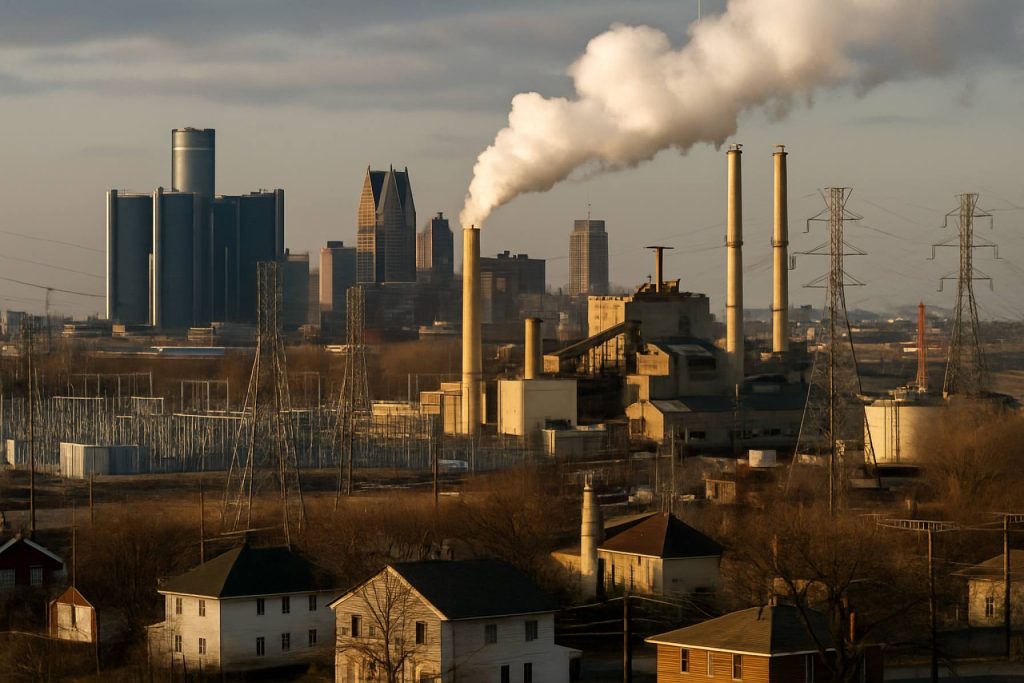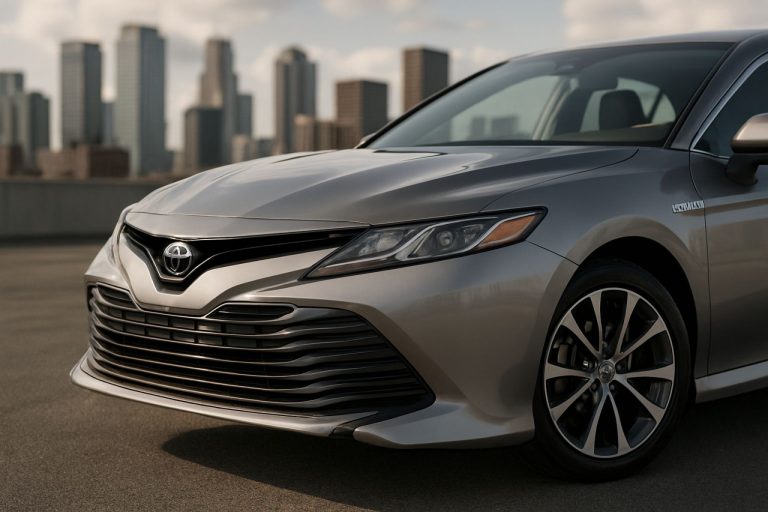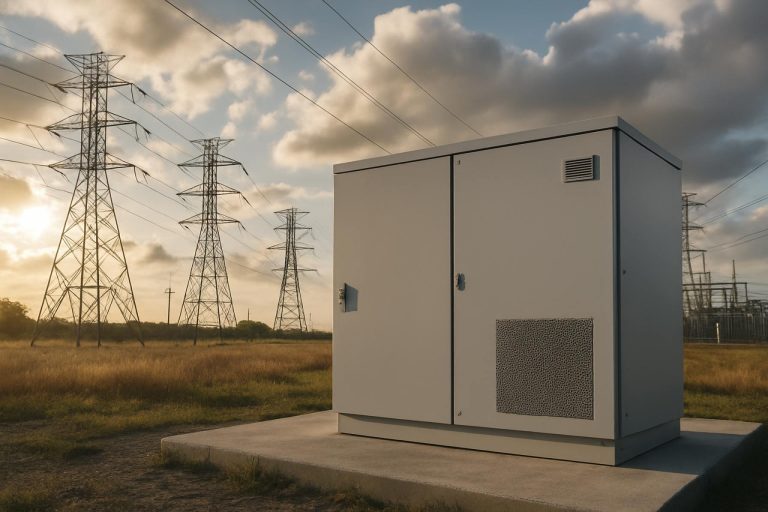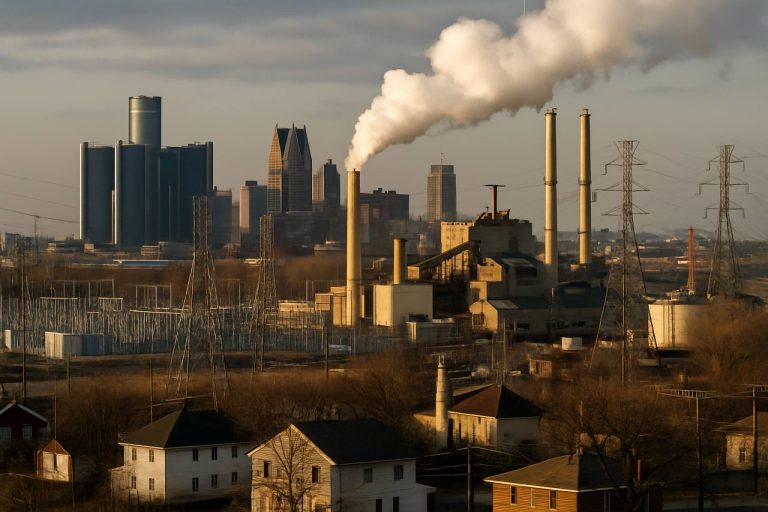
- General Motors is investing nearly $900 million into V-8 engine production in Buffalo, shifting focus away from electric vehicles (EVs) due to slowed EV sales and continued consumer demand for traditional engines.
- The American auto market is showing resistance to rapid electric adoption, with drivers and manufacturers favoring familiar gas-powered technology.
- The housing market is cooling as unsold single-family home inventories rise, echoing conditions from the last financial crisis.
- Tariff-driven inflation is beginning to impact everyday goods, with noticeable price increases in furniture and home essentials.
- Economic shifts often start subtly, and the balance between innovation, consumer habits, and rising costs will shape America’s next economic chapter.
The iconic smokestacks of Buffalo, once a symbol of America’s industrial brawn, press into the roiling summer sky. At General Motors’ Tonawanda complex, a new-era drama is unfolding. The company is tearing up the blueprints for a $300 million electric motor plant and, instead, is pouring nearly $900 million into the resurrection and reimagination of its gas-guzzling V-8 engine—betting big against the tide of electric vehicle (EV) optimism.
GM’s gamble speaks volumes about the state of the American auto market. While EVs once dazzled investors and green-minded drivers alike, sales have cooled. Wall Street’s dreams of an all-electric future remain on the distant horizon as American drivers, with gas pumps filling rapidly at rest stops and classic combustion engines roaring down interstates, seem reluctant to let go of the power and familiarity of the traditional V-8. GM’s Tonawanda investment, the largest in its engine plant history, will establish the facility as a critical hub—second only to its original site—for the assembly of its sixth-generation V-8 engines.
Behind this industrial pivot lies a ripple effect coursing through other corners of the U.S. economy. The housing market is feeling a chill. As the pandemic’s feverish real-estate surge fades, unsold inventories edge higher. April delivered a sobering figure: 117,000 newly built, unsold single-family homes, a haunting echo of the post-financial crisis doldrums last felt in July 2009. Builders who once couldn’t pour foundations fast enough now face rising stockpiles, signaling that a once red-hot market has cooled to a cautious simmer.
Underpinning these shifts is a thread running through everyday life—tariff-fueled inflation. While most Main Street shoppers haven’t felt a widespread surge in prices, one can spot trouble in the aisles of furniture stores and home goods showrooms. Costs for household staples are quietly creeping up, nudged by new tariffs. This marks one of the first tangible signs that trade tensions with global partners are beginning to raise the price tags on ordinary domestic lives.
The GM and housing pivots, coupled with signs of inflation, illuminate a central truth: economic tides shift under the surface before most notice the waves. Factory floors, construction sites, and checkout counters telegraph signals about confidence, caution, and change.
Key takeaway: Despite the electric revolution’s dizzying forecasts, American industry and households are rooted in tradition, with market realities dictating a slower—sometimes reluctant—march into the future. The next chapter in America’s economic saga will be written not just by grand visions, but by the push and pull between innovation, consumer behavior, and the hidden costs rippling across the nation.
For more insights on American industry and economic shifts, explore leading business news sources and keep an eye on the pulse of manufacturing, the heartbeat of the nation’s economic landscape.
The Shocking Truth Behind GM’s V-8 Revival: What Detroit’s Biggest Bet on Gas Engines Means for You and the American Future
Background: What’s Happening at GM’s Tonawanda Plant?
General Motors, once hailed as an EV pioneer, has just made waves by scrapping its planned $300 million electric motor facility at the historic Tonawanda campus—opting instead to pour nearly $900 million into new, advanced V-8 engine production. This decision reverses the narrative many investors and consumers anticipated: that Detroit’s automakers were all-in on electric vehicles. Instead, GM is doubling down on what it calls “the sixth generation” of its iconic, powerful internal combustion engines.
Additional Facts Not Fully Explored in the Source Article
1. The Market Split: Combustion Isn’t Dead Yet
– Stagnating EV Growth: The Electric Vehicle segment still only makes up about 7% of new vehicle sales in the U.S. as of Q1 2024 ([source: IEA](https://www.iea.org)), and growth has slowed considerably compared to projections from 2020–2022.
– V-8 Demand: Full-size trucks and SUVs—GM’s top-sellers—still lean heavily on V-8 engines, favored for towing, longevity, and performance.
– Fleet & Commercial Bias: Many commercial and government fleets remain anchored to gas engines due to infrastructure, availability, and upfitting costs for electrification.
2. How-To: Make Your V-8 More Efficient
If you’re part of the millions still driving a gas-powered vehicle, especially a V-8, you can cut costs and emissions by:
– Regularly maintaining air filters and spark plugs
– Using recommended engine oils for improved efficiency
– Keeping tires inflated to optimal levels
– Limiting idling and adopting smoother acceleration habits
3. Industry Trends & Forecasts
– Hybrid Growth: While pure EV sales slow, hybrid vehicles (which combine gas and electric) are seeing record demand as a compromise route ([McKinsey](https://www.mckinsey.com) 2024 report).
– Battery Pricing Pressure: Global lithium and nickel costs declined in 2023 but supply uncertainty continues to keep EV pricing high.
– Automation in Factories: GM’s Tonawanda facility is investing in new robots and digitalization for V-8 assembly, forecasting a boost in efficiency.
4. Reviews & Comparisons
– V-8 vs EV: V-8 engines provide unmatched towing, instant power, and long-haul reliability. EVs, however, offer quiet operation, fewer maintenance requirements, and lower “fuel” (electricity) costs over time.
– Competitors: Ford and Stellantis (Dodge, Ram) are following similar transitional paths, each maintaining strong portfolios of both V-8 and hybrid offerings as EV adoption remains speculative.
5. Controversies & Limitations
– Environmental Impact: Critics slam GM’s move as a step backward environmentally. The U.S. Transportation Department data shows that tailpipe emissions still account for 29% of greenhouse gases domestically.
– Workforce Anxiety: Factory retraining is critical; gas engine lines require different skills than high-voltage electric drive systems.
6. Housing & Inflation Insights
– Housing Downturn: New homes’ unsold inventory is at its highest since the post-2008 recession era—117,000 newly built single-family homes as of April 2024 ([U.S. Census Bureau](https://www.census.gov)).
– Tariffs & Price Creep: Recent tariffs (on items like plywood, steel, electronics) are filtering through to consumer prices, seen first in home goods and DIY products.
7. Security & Sustainability
– Energy Security: A diversified fleet (gas, hybrid, electric) buffers against grid instability and raw material shortages for batteries.
– Sustainability Concern: EPA regulations are tightening. Expect new rules in 2025 that could penalize non-compliant gas engine production.
8. Pressing Reader Questions—Answered
Q: Is this the end of GM’s EV push?
A: No. GM’s Ultium EV platform is still moving forward, but timelines may be adjusted, and more hybrid models will likely emerge.
Q: Should I buy a new V-8 or wait for EV improvements?
A: If towing, range, and infrastructure matter, a V-8 (or hybrid) is still a wise choice for the next 3–5 years. EVs are closing the gap but still have hurdles, especially for long distances or rural areas.
Q: What’s next for homebuyers in the current housing slowdown?
A: Consider negotiating harder or waiting—prices may cool further as inventory builds and inflation tempers demand.
Q: How will tariffs impact my costs?
A: Furniture, appliances, and electronics may see the quickest price hikes; shopping sales or opting for domestically sourced alternatives can help.
9. Pros & Cons Overview
| Pros | Cons |
|———————————————–|————————————————–|
| Existing infrastructure supports gas V-8s | Increased emissions compared to EVs/hybrids |
| Easier, cheaper refueling nation-wide | Less government incentive/support |
| Proven reliability for heavy-duty tasks | Potential cost volatility with fuel & tariffs |
| Immediate familiarity for most drivers | Lower long-term resale value in an EV-favored market |
10. Actionable Recommendations & Quick Tips
– For car buyers: Test drive both gas and hybrid options to compare real-world comfort and total cost of ownership.
– For homeowners: Time major purchases (appliances, furniture) around seasonal sales to mitigate tariff-driven price hikes.
– For investors: Monitor automaker earnings calls for any pivot in strategy or signs of large workforce retraining initiatives.
– For DIYers: Stock up on home-goods essentials before further tariffs take effect.
– For everyone: Stay updated via credible sources like GM, U.S. Census Bureau, and leading business news sources.
—
In summary: General Motors’ massive V-8 investment is less a rejection of the electric revolution and more a strategic hedge. As technology, environmental policy, and consumer demand continue to evolve in unpredictable ways, keeping your options open—in your garage, your household spending, and your investments—is wise in 2024 and beyond.



